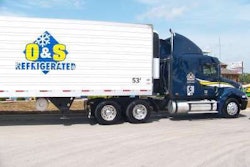The declining overall economy and freight demand both are starting to find a bottom, but overcapacity remains a major concern, warned Eric Starks, president of FTR Associates. “Trucking has limited upside over the next four quarters,” Starks told attendees of the 2009 CCJ Symposium on Tuesday, June 30, at the Ross Bridge Resort in Birmingham, Ala.
Freight may be the backbone of the trucking industry, but with industrial production at its worst since the first quarter of 1975 and other significant continuing issues – including demand and overcapacity – trucking is experiencing its worst environment since the 1980s, Starks said. Many economic indicators – including the ISM Manufacturing Index, the Chicago Fed National Activity Index, employment figures, the Consumer Price Index, durable goods orders, retail sales, inventory levels and housing starts – reveal mixed signals and are near historic lows, but some of these indicate stability and the possibility of improvement in the next few business quarters, he said.
Credit is available, but banks are reluctant to lend to trucking, Starks said. Another phenomenon contributing to overcapacity is what Starks called “zombie truckers” – fleets kept alive by banks who would rather keep them afloat instead of repossessing their equipment. Regarding the used market, many companies are upside down on their trucks, and replacement cycles have been extended because of better equipment and fewer miles being put on it, which Starks said will lead to no measureable prebuy of less-expensive equipment prior to Jan. 1, 2010, when tighter emissions regulations mandated by the U.S. Environmental Protection Agency go into effect.
So what’s the economic outlook? Starks sees a “flattening-out” in the third quarter this year, followed by a slight rebound in the fourth quarter. As far as U.S. Gross Domestic Product goes, “this will be the worst year since 1946,” he said. On the downside, the current U.S. financial crisis is more similar to the 1930s instead of the 1980s, and the global recession is a hindrance; on the upside, past recessions have tended to exit with a bang, so Starks said he is looking for stronger growth recovery in late 2010.
With the truck freight outlook at its worst since 1982, “It’s going to be difficult to get back to traditional levels of growth” to make up for this year’s loss, said Starks, who doesn’t see any growth until 2011, and any traditional level of growth until 2014. Significant excess capacity must be worked out of the market, and with pressure from shippers and diesel fuel prices affecting cashflow, trucking bankruptcies are predicted to spike in the coming quarters, he said.
Freight growth has regressed to 1996 levels, but the heavy-duty truck population is substantially higher than 13 years ago, so many tractors are sitting idle – “This is unprecedented,” Starks said – and only a rebound in freight demand will ease the problem. The age of the U.S. Class 8 tractor population will continue to increase because trucks on the road today aren’t being used as much, and the age of the trailer population also will climb because of better-built equipment and lack of freight, he said.
The 2009 CCJ Symposium is sponsored by ACS Expedited Solutions, Comdata, FuelSurchargeIndex.org, Goodyear Tire & Rubber Co., Navistar Inc., PeopLease Corp., PeopleNet, Roadranger, Shell Lubricants, TravelCenters of America and Whiting Systems Inc.












